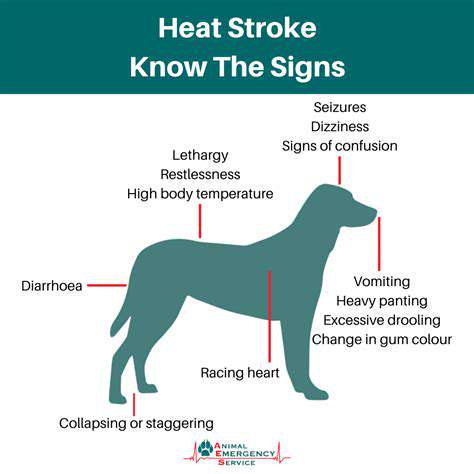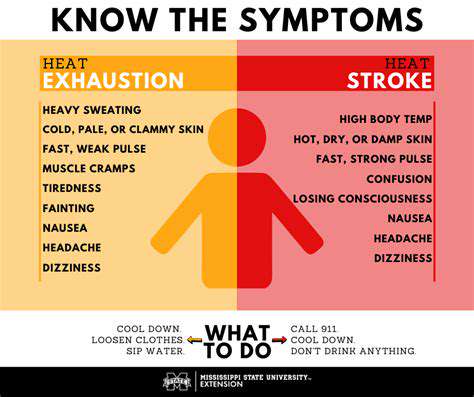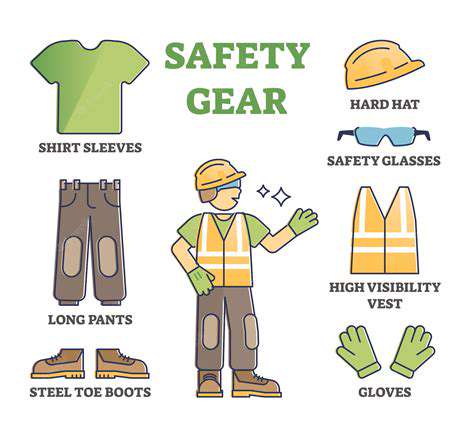Preventing heat exhaustion in dogs during summer walks
Assessing Your Dog's Heat Sensitivity

Understanding Canine Physiology
Dogs, like humans, experience physiological changes in response to environmental conditions. Understanding their basic heat regulation mechanisms is crucial for identifying potential heat sensitivity issues. Dogs rely heavily on panting to dissipate excess body heat, a process that can be overwhelmed in extreme conditions. Their fur also plays a role, acting as insulation, but excessive fur can hinder heat dissipation.
Internal temperatures, particularly in breeds with thick coats, can rise more rapidly during heat stress. This internal temperature increase can lead to serious health complications.
Identifying High-Risk Breeds
Certain breeds are predisposed to heat sensitivity due to their physical attributes. Breeds with short snouts, such as Bulldogs and Pugs, often have difficulty panting effectively, making them highly vulnerable to overheating. Similarly, breeds with thick or double coats, like Huskies and Samoyeds, can struggle to regulate their body temperature in warm environments.
Additionally, age and overall health status also play a crucial role in a dog's ability to tolerate heat.
Recognizing the Signs of Heatstroke
Early detection of heatstroke is vital for prompt treatment. The symptoms can range from mild discomfort to life-threatening situations. Early signs include excessive panting, drooling, lethargy, and a rapid heartbeat. If you notice these symptoms, you should take immediate action to cool your dog down.
More severe symptoms include vomiting, seizures, and loss of consciousness. In these cases, immediate veterinary attention is critical.
Assessing Environmental Factors
Environmental conditions play a significant role in a dog's susceptibility to heat. High temperatures, combined with high humidity, can create a dangerous environment for dogs. Exposure to direct sunlight for extended periods can also significantly elevate their body temperature.
Consider the time of day when your dog is most active and the ambient temperature and humidity levels when planning outdoor activities.
Monitoring Your Dog's Activity Levels
Adjusting your dog's activity level is essential in maintaining their well-being during hot weather. Limit strenuous activities during peak heat hours, and provide ample opportunities for rest and hydration. Consider indoor activities, such as playing fetch or tug-of-war in a cool environment, during the hottest part of the day.
Providing a cool place for your dog to rest and access fresh water is crucial.
Implementing Cooling Strategies
Various cooling strategies can help mitigate the risk of heatstroke. Providing access to cool water and frequent opportunities for drinking is a fundamental step. Using cooling mats or vests can help to reduce body temperature. The use of cooling towels can also be beneficial, particularly in emergency situations.
Consider misting your dog with cool water, but avoid ice water as it can cause shock.
The Importance of Hydration and Breaks
Staying Hydrated During Heat
Hydration is paramount for preventing heat exhaustion in dogs, especially during the summer months. Providing a constant supply of fresh, cool water is crucial. Dogs, like humans, can become dehydrated quickly in hot weather, leading to a cascade of physiological problems. This dehydration can affect their ability to regulate body temperature, making them more susceptible to heat exhaustion. Furthermore, dogs often don't exhibit overt signs of thirst in the same way humans do, so proactive hydration is essential. Monitoring water intake and ensuring access to a readily available water source is vital for their well-being.
The type of water bowl also matters. A shallow, wide bowl is often better than a tall, narrow one, as it allows the dog to drink more easily and prevents them from accidentally tipping it over. Consider using multiple water sources strategically placed around the yard or house, especially if your dog is prone to heat sensitivity or has a larger yard. This ensures that water is always accessible, even when they're playing or exploring.
Strategic Breaks and Cooling Strategies
Taking frequent breaks is just as important as hydration. During hot weather, limit strenuous activities, especially during the hottest parts of the day. Avoid long walks or playtime in direct sunlight. If you must exercise your dog, do so in the cooler parts of the morning or evening. Dogs, like humans, can overheat quickly, and preventing this excess heat buildup is crucial.
Providing a cool, shaded area where your dog can rest and recover is a vital part of preventing heat exhaustion. This could be a covered patio, a shady spot in the yard, or even a cool room inside. Consider using cooling mats or towels to help lower your dog's body temperature if they are showing signs of overheating, such as panting heavily or lethargy. These methods provide a safe haven for your dog to cool down and recover from the heat.
In addition to providing shade and rest, consider using cool compresses or a cool bath to help reduce body temperature. However, do not use ice water, as this can shock the dog. Always consult your veterinarian if you have concerns about your dog's heat tolerance or if they are exhibiting signs of heat exhaustion.
Remember, early intervention is key in preventing heat exhaustion. By recognizing the signs of overheating and taking proactive measures, you can help keep your furry friend safe and comfortable during the summer months. Regular observation and a proactive approach to hydration and rest are crucial for their well-being.
Keeping your dog cool and hydrated is paramount to their health and happiness. Regular monitoring and appropriate breaks are key elements in preventing heat exhaustion. Pay attention to their body language and adjust activities accordingly to mitigate the risks of overheating.


- Best flea combs for dogs with long hair
- How to create a stress free environment for your dog
- How often should you bathe your dog?
- How to stop your dog from chewing on furniture
- Common mistakes when washing your dog at home
- How to care for dogs during snow season
- Why cleaning your dog’s ears is essential
- Signs your dog needs a nail trim
- How to prevent sibling rivalry between dogs
- Foods to avoid for dogs with sensitive stomachs
- How to reduce arthritis pain in dogs naturally
- How to deal with poisoning in dogs from household items